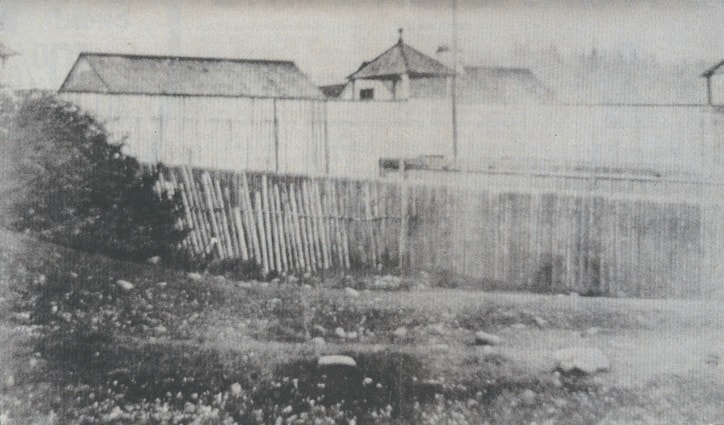Fort Rupert was established in Beaver Harbour on Northern Vancouver Island in 1847, the second permanent trading post established on Vancouver Island after Fort Victoria in 1843 by the Hudsons Bay Company (HBC).
During the advent of coal-powered steamships, Fort Rupert was established to support the mining of coal from reported surface deposits in the area.
Due to the perceived hostility of local First Nations, Fort Rupert was one of the most highly fortified forts constructed by the HBC. It had an 18-ft palisade wall, was fortified with inner and outer gates, and was protected by a number of cannons, one of which is on display outside the current Kwakiutl Band Administration office.
More than 2500 First Nations lived in the area immediately adjacent to the Fort. There are numerous historical references to cannons being used on local First Nations villages during this early historical period.
James Douglas, the Chief Factor for HBC in Victoria, signed two Douglas Treaties with the Queackar and the Quakeolth First Nations in the North Island in 1851, in order to settle concerns about establishment of the Fort. They were paid in blankets the equivalent of £64 and £86 respectively.
These are some of the only treaties ever concluded historically with B.C. First Nations.
More than 220 large stumps were removed to prepare the site, just to the southeast of the main Kwakiutl reserve. The fort was constructed with green wood, which reportedly twisted and cracked as it dried, meaning the buildings required significant repair as they aged.
The chimney for the central oven was constructed three times before it met the specifications of standards required. It was one of the last remaining vestiges of the fort, still visible as recently as 2003.
French Canadians, Russians, and Hawaiians were employed to construct the fort.
The settlement included wharves, houses, a blacksmith’s shop, gardens, a common kitchen, livestock areas, water closets, a provisions house, a trading shop, and areas for coal and firewood supplies.
Before long it also included a graveyard behind the main Fort. The Fort was designed to be manned by a small number of employees.
Fort Rupert never lived up to the expectations of the HBC, and was sold to an HBC employee, Robert Hunt, at some point between 1873 and 1882.
Hunt and his wife, Mary Ebbets, from a high ranking Tongass-Tlingit First Nations family in Alaska, had 10 children, and many of their descendants still reside on the North Island today in such families as the Hunts, Lyons, Cadwalladers, and many others.
Brenda McCorquodale lives in Port Hardy and is a North Island history enthusiast. If you have any stories or North Island information that you’d like to share, please e-mail Brenda at storeysbeach@gmail.com.
